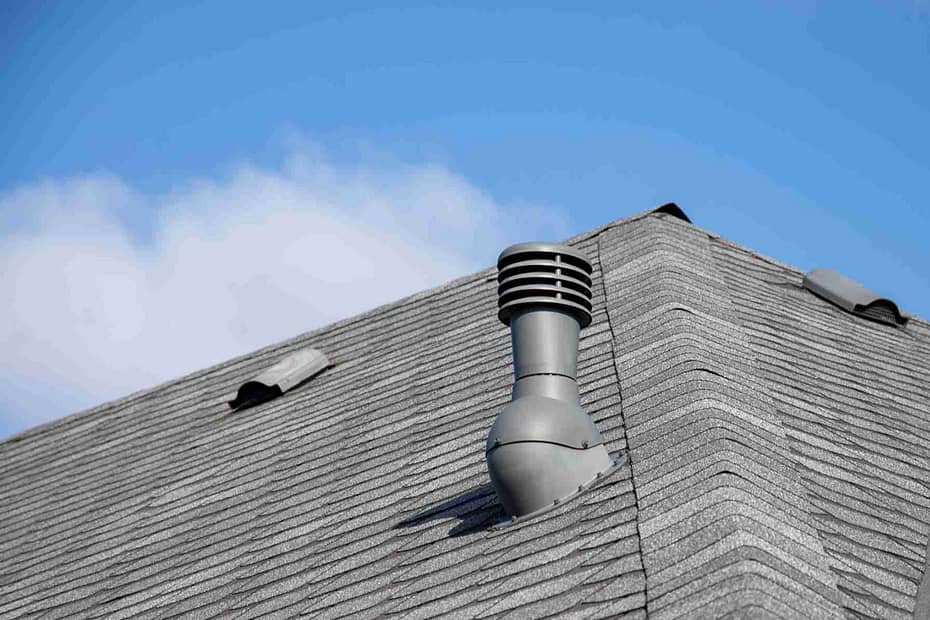Whether or not you have solar panels on your home which prevent you from having to pull all of your home’s energy needs from the grid, you can still choose to install solar-powered roof vents on your roof. Especially if you live in an area with plentiful sunshine, a solar roof vent can help ventilate your home and lower your energy bills by as much as 30 percent by keeping attic temperatures at optimal levels. If you’re considering adding these energy-efficient vents to your roof, find a roofer to help you today.
What is a Solar-Powered Roof Vent?
First, it helps to know what a roof vent is. A roof vent is a ventilation system that’s put on the roof in order to allow hot air that rises and would otherwise get trapped in the attic to flow out of your home. Normal, or non-solar roof vents rely on wind to work: they pull fresh air into your home while simultaneously removing stale air. A solar-powered roof vent doesn’t rely on wind, and instead uses solar energy to operate. It consists of a vent that’s covered by a photovoltaic grid, or solar panel. The obvious advantage of a solar-powered roof vent is that your home can still enjoy proper ventilation even on hot, stagnant days.
Why You Need These Roof Vents
Solar-powered roof vents work to remove hot air from your attic, which leads to lower temps and lower humidity at the top level of your home. Roof ventilation systems are crucially important for the following reasons:
- Cuts down on mold and mildew by lowering humidity.
- Can extend the life of your roof by keeping the underlayment in good condition.
- Lowers energy bills since an attic that’s too hot will trigger your home’s air conditioner to work too hard.
- Warm attic air after snowfall can cause the snow to melt off the roof too quickly, which can cause ice dams, leading to leaks inside your home.
Solar-powered roof vents provide all the benefits of regular roof vents, with the added advantage of working more efficiently since they don’t require wind to function properly.

The Cost Of These Roof Vents
By now, you’re probably convinced of the benefits of solar-powered roof vents. Naturally, you might find yourself wondering how much it might cost to install one of these on your home. You can expect to pay between $300 and $1,000 to have a solar-powered roof vent on your home. While this price is higher than what you’ll pay for a non-solar or passive roof ventilation system, rest assured that a solar-powered roof vent will pay for itself over time in energy savings. Remember; since it’s solar-powered, you won’t have to pay anything to run the vent. You can also check out our solar roof calculator or our solar panel cost calculator if you want to see what it would cost to invest in solar on your home.
Where to Install Solar-Powered Roof Vents
In this section, we’ll discuss how many solar-powered roof vents you might need for your roof, based on the size of your home. We’ll also give advice on where they should (or should not) be placed.
For homes with a medium roof slope, you’ll need one solar-powered roof vent if your home is 1600 square feet or less. For homes between 1600 and 2400 square feet, two of these roof vents should be sufficient. Homes above 2400 square feet may need three or more vents.
A solar-powered roof vent is considered an active ventilation system, and as such, it should be placed more than 10 feet away from any existing passive vents on your roof. That’s because the two types of fans can actually work against one another when placed too close, and short-circuit the air flow your roof needs in order to stay cool.
Solar-powered roof vents should always be facing the south when placed on your roof, in order to maximize their sun exposure (so they have enough energy to continue running). If there’s a part of your roof that’s consistently in the shade, you may need to consider installing a model with a remotely mounted panel.
Fact Checked by Christin Perry 8/9/2024
